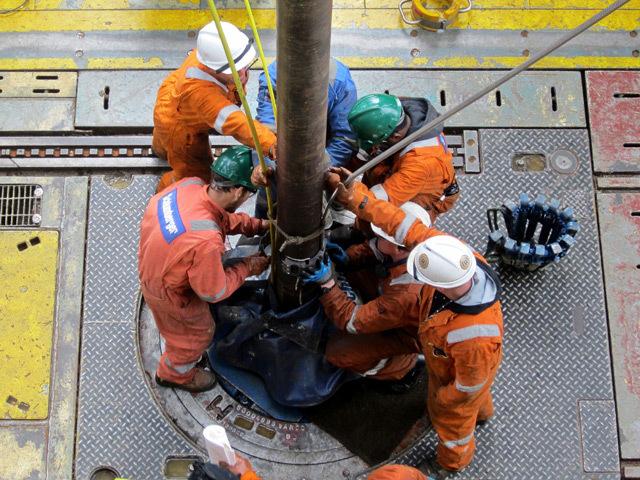
Based on his recent MSc research at Cranfield University, Dr Bill Robb of Safety Improvers, proposes that human factors applications could be even more effective.
Human factors specialists can be more effective – but only if they focus on adverse mental states
Human factors is being promoted as “the next safety frontier…”, “ a key ingredient of effective health and safety management”, and necessary for further progress in safety. However despite human factors being employed for over sixty years (mostly in the aviation industry) the existence of human factors professional bodies, and academic journals, there are doubts about what the human factors actually are. For example, one can find statements such as:
* “Not only have we not figured out how to implement human factors, most of us don’t even understand what it is…”
*“We all know we need to tackle human factors, but what does it need to look like for our industry … I think everybody is also kind of feeling around in the dark …”
* “…[the drilling] industry is just beginning to understand and implement human factors.”
A major problem with human factors is that definitions are rarely given and when they are they are meaningless. For example, “Anything that affects a person’s performance”, and “Human Factors is about people…” tell us nothing. Further confusion is caused by contractions where some claim that ergonomics and human factors are the same thing and some say it is not. Also when authors refer to “ real human factors”, “traditional human factors” and “good human factors” they do not explain what unreal, non-traditional and bad human factors are.
A first step in better understanding, is to realise that the term “human factors” is used to name at last four things:
- A concept – Taking into account the human factor is essential for success.
- A discipline/study – I am doing an MSc degree in Human Factors.
- A practice – I am a Human Factors practitioner.
- The things which have the potential to, and do, lead people into errors
However, there is still a difficulty. There is no clarity on the things – THE human factors.
For example, I studied eleven detailed reports on human factors prepared by the International Association of Oil and Gas Producers (OGP). The reports discuss, “human factor issues”, “human factor elements”, “human factor causes” , “performance shaping factors” , “human factor skills” and “psychological factors”. Within each of these groups long lists of things that can be the cause of errors and incidents are given. These many things fall into seven groups:
- state of machinery and equipment
- conditions in the physical work environment
- conditions in the mental environment (individuals’ attitudes, behaviours, expectations)
- nature of the actual tasks to be done
- accessibility of work systems/procedures and organisational departmental structures/reporting lines
- condition of human resources – competence, experience, numbers of people, and physical
- mental and physical state of the frontline operator
However, nowhere in the data were there statements such as, “These are the human factors” or “This is a human factor”. What seems to be accepted is that anything that is wrong and might adversely affect human performance is a “human factor”. This means that things are called “human factors” merely because they were done by or to or affect humans. Again, not much help.
What’s the solution?
First recognise the many things that could, and sometimes do, lead people into errors and hence incidents as “potential-error-conditions” (PECs). This step is already recognised by some authors , calling then, “antecedents”, or “resident pathogens”, or “latent conditions” or “error traps”. So a poorly maintained machine, a bullying supervisor and a very hot environment are not human factors but PECs. PECs can be created by anyone, a managing director, a purchasing managers, a designer, a supervisor and an operator.
Second, recognise that people who do or say things which create PECs do so for a reason. So we must ask what is it that affects a person’s reasoning such that he/she creates the PEC? My research showed that it is certain adverse mental states (AMSs) that causes the reasoning which leads to the wrong safety decision. Here are just a few:
- Confusion – uncertain about what to do
- Lack of concentration – day dreaming, being on “autopilot”
- Mis-motivation – over-eagerness to please, ambition
- Being afraid – whether justified or unjustified
- Anger – feeling of being badly treated, wanting revenge
- Not caring – about the rules, about the safety of self and others
There are many advantages to reserving the term “THE human factors” for the AMSs. For example, it explains why people do not stop unsafe jobs when they are told it is their right and obligation, and why it is experienced, competent, well-meaning people who have accidents. AMSs clearly show that operator-error is not the sole error in any incident.
Most importantly, it should prevent the ineffective practice of cobbling together courses comprising bits of leadership, communication, team work and inter-personal skills. Human factors workshops should concentrate on helping people be more aware of when they are being influenced by AMSs and giving them tools to overcome their influence.
There is plenty of scope for further research into the AMSs and how to help people overcome them. My own work over the years shows that many more incidents can be avoided by using the AMSs approach.
To avoid criticism of not giving a definition, here is my attempt after the research.
Human Factors is the name given to both a discipline and a practice which aim to reduce errors and incidents by studying, and devising training to overcome, the adverse mental states which affect reasoning, which leads to decisions that create potential error conditions or result in, continuing with a task when faced with an existing potential error condition .”
Recommended for you
